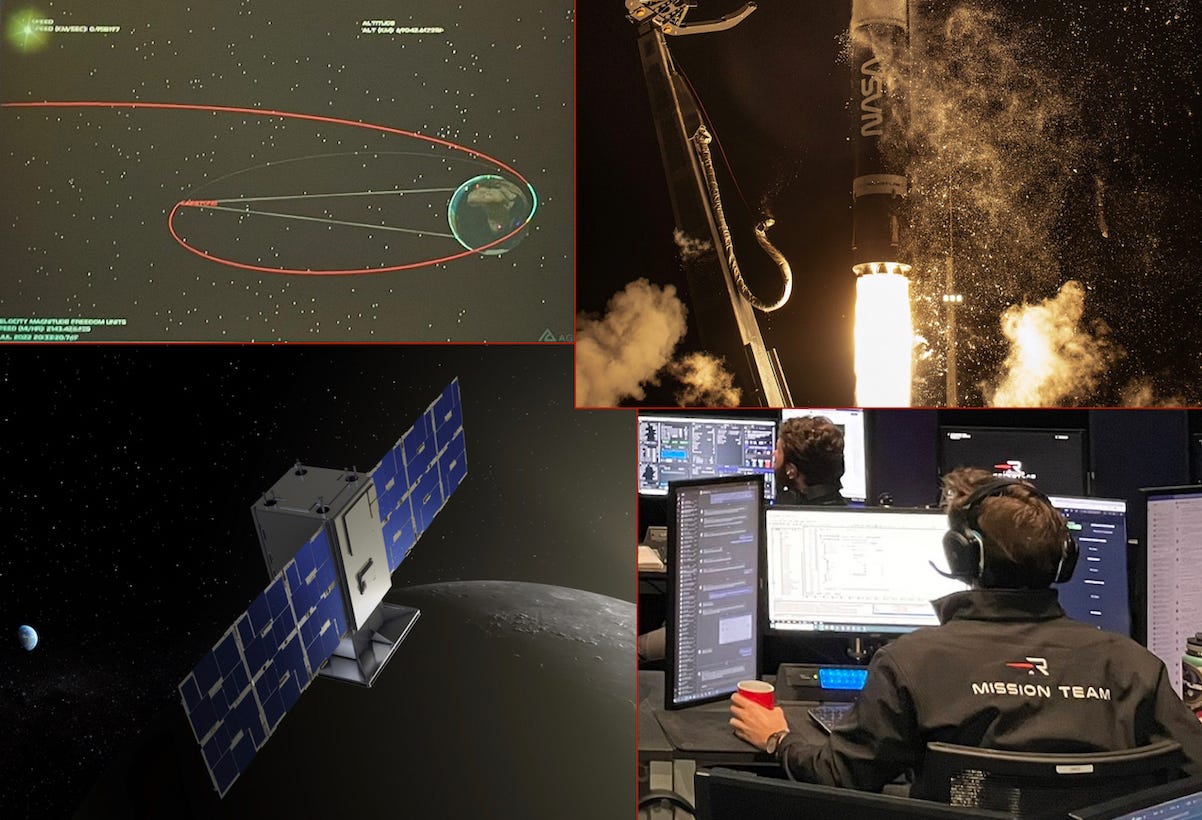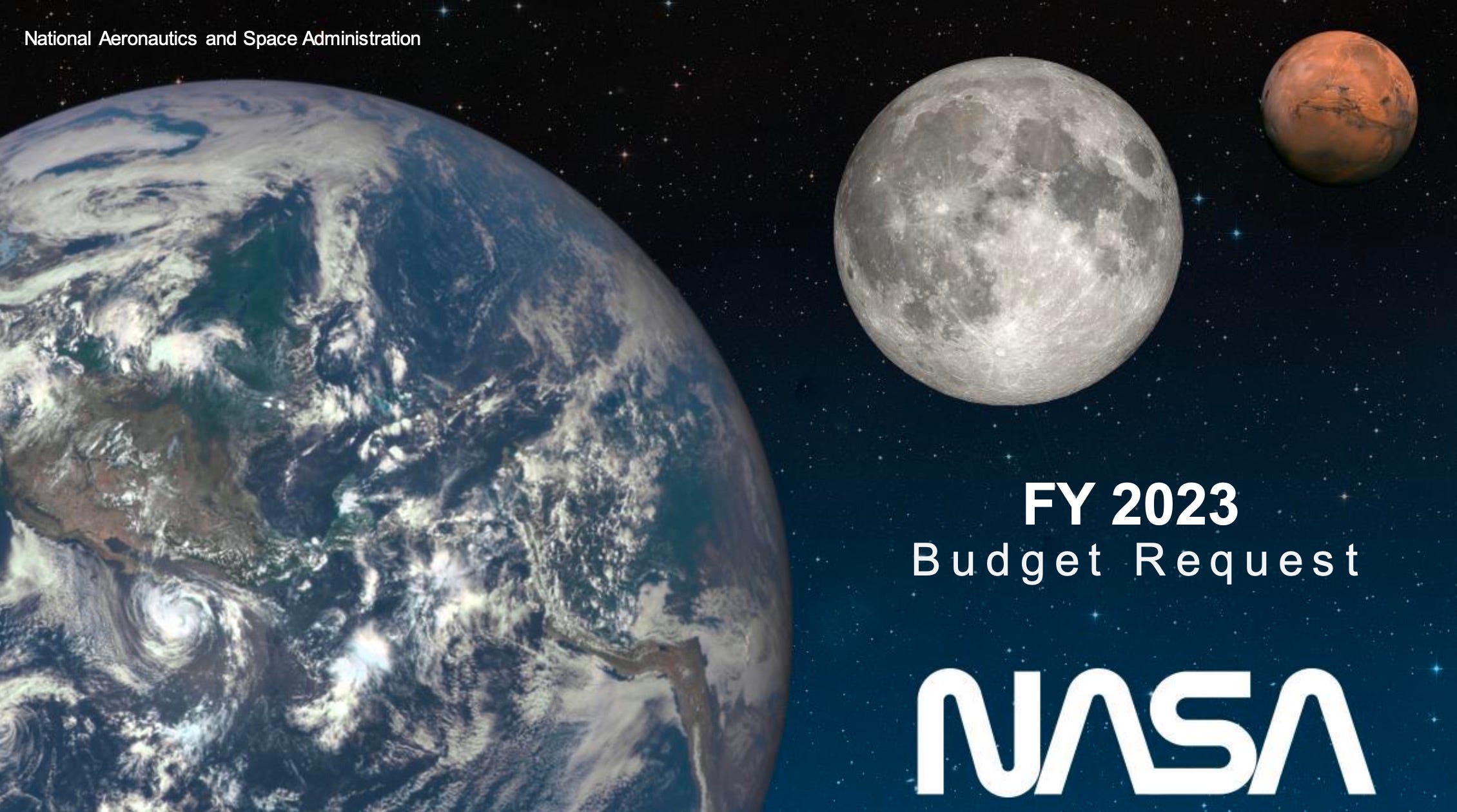Moon Monday #84: A lunar-bound CAPSTONE, an Earthbound NASA, and more updates
Rocket Lab puts CAPSTONE on the path to the Moon
On June 28, Rocket Lab successfully launched the NASA-funded and Advanced Space-built $13 million CAPSTONE spacecraft from New Zealand. At about 300 kilograms, CAPSTONE and the upgraded Photon third stage together are the heaviest payload the company’s small Electron rocket has ever lifted. Over the past six days in Earth orbit, Photon’s engine fired seven times to successfully raise the orbit for it and the attached CAPSTONE craft. Today, July 4, Photon has deployed CAPSTONE to deep space on a fuel-saving ballistic transfer which arches back to the Moon in November for the mission.

The mission pushed the Electron rocket stack to its limits, and now goes down as Rocket Lab’s first Moon mission launch and deployment. Not only does it reinforce confidence in the company’s upcoming interplanetary missions to Venus and Mars but also proves that launching cost-effective, small planetary spacecraft on small rockets is possible in a fairly quick turnaround time.
NASA’s FY 2023 budget proceedings don’t look bleak for Artemis
On June 28, the U.S. House approved $25.45 billion as NASA’s FY 2023 budget, a substantial increase over FY 2022’s $24.04 billion but less than the Presidential request of $25.97 billion. Given below are the Artemis and lunar-related highlights.
- The SLS rocket, Orion spacecraft and related ground systems continue to be funded at about the same levels as requested.
- NASA’s Lunar Discovery and Exploration (LDEP) program gets $10 million more than the requested $486 million particularly to ensure full funding for commercial CLPS lunar landings enabling surface science, including the VIPER rover mission. LDEP is the organizational unit chiefly integrating and coordinating Artemis science efforts across the agency as well as with NASA’s commercial and international partners. Their recent work includes formulating the Science Definition report and the Artemis science structure for the first crewed landing with Artemis III.
- NASA had requested $48 million to begin meticulous infrastructure planning for future Artemis missions working towards a baseline sustainable habitat. The U.S. House has approved $40 million for commercially developing lunar surface power systems, which primarily includes vertical solar arrays and nuclear fission units.
- Finally, the U.S. House has approved the requested $1.49 billion for the development of crewed lunar landers by U.S. companies, compared to last year’s $1.2 billion. This is good but still modest because the funding would be divided between NASA’s selection of SpaceX Lunar Starship for Artemis III, an alternative provider for the same mission, the previously discussed sustainability upgrades for Lunar Starship and its competitor chosen as part of the Sustaining Lunar Development (SLD) project.
While the U.S. House’s lunar budget approval is looking great, we’ll only find out later this year after the Senate proceedings how much money NASA actually gets.

At this point, I’m compelled to link to Eric Berger’s recent report that NASA is planning two alternate timelines for Artemis missions because the agency anticipates future budgets not being high enough to build a baseline sustainable habitat on the Moon by 2032. The piece sounds alarming but in my opinion isn’t a bad outlook for several reasons:
- While it is true that Artemis missions are getting delayed from their (revised) ambitious targets, that was always assumed to be the case by almost everyone in the space industry.
- As for SLS and Orion, they were always designed to build the NASA-led international Gateway lunar station rather than specifically enable landings on the Moon. No surprises there.
- Planning alternate launch dates and timelines for missions and their programs is a standard industry practice, and so by itself cannot be considered valid hints of additional delays.
- The evolved, sustainable crewed lunar landers that NASA seeks from SpaceX and a SLD competitor for frequent Earth-Moon ferrying were never likely to be ready for showtime before end of the decade anyway.
Personally, I think this decade is about the endurance of Artemis as a collection of funded, collaborative programs more than anything else. An initial wave of successful crewed Artemis missions, alongside the desirable high percentage of successes in affiliated programs like CLPS, will be key to attaining the critical mass necessary to sustain and thrive NASA’s Artemis ambitions in the next decade.
Thanks to Epsilon3 for sponsoring this week’s Moon Monday.
Thanks also to Alexandra Witze for supporting my independent writing.
More Moon
- Chinese scientists have released the most detailed geological map of our Moon to date by combining data from Chang’e lunar robotic missions and several international ones.
- NASA transported the fully stacked SLS rocket back to its assembly building from the launchpad on June 2. Over the next two months, teams will replace a seal on the quick disconnect part of the tail mast umbilical on the rocket’s mobile launcher, arming the rocket’s flight termination system, and preparing for a target launch of Artemis I in August end (though September is more likely). While SLS was at the launchpad, teams tested and verified the startup and shutdown of the thrust vector control system of the rocket’s twin boosters. This test was supposed to be part of the original T-9.3 seconds wet dress rehearsal but was done separately because the rehearsal ended 20 seconds prior.
- ISRO Chairperson S. Somanath told reporters last week that two GSLV Mk III rockets—India’s most powerful—are scheduled to launch OneWeb satellites by October 2022 and January 2023 respectively. Since India doesn’t have a spare GSLV Mk III lying around, and can only ready one for launch every few months, it automatically means the launch of the Chandrayaan 3 Moon landing mission will be delayed from January 2023. This is yet another example of India’s recent commercial space reforms coming at the cost of its fledgling but promising planetary science program. :/
- As part of project MOONRISE, funded by Germany at €4.74 million, research teams at LZH and TU Berlin are developing an AI-supported compact laser system to melt lunar soil for 3D-printing infrastructure such as landing pads and roads. They’ve successfully demonstrated the system’s core working on Earth, including under simulated lunar gravity in an Einstein-Elevator. They intend to launch a test system in 2024 on an as yet unknown flight.
- A re-plug to my no-math explainer of the rocket equation and its fundamental implications, highlighting how our Moon can be an efficient, long-term rocket and infrastructure platform from an energy expenditure point of view to help us settle across the Solar System. Nature has been kind enough to give us a moon that’s both a scientific and technological bonanza. Let’s make the most of it.
→ Browse the Blog | About | Donate ♡
